- Preparing the Soil for Onion Planting
- 1. Clear the area
- 2. Test the soil
- 3. Amend the soil
- 4. Loosen the soil
- 5. Remove any clumps and debris
- 6. Create rows or raised beds
- 7. Mulch the soil
- 8. Water the soil
- Choosing the Right Onion Varieties for October Planting
- Growing Season Length
- Storage Qualities
- Flavor Profiles
- Popular Onion Varieties for October Planting
- Best Practices for Planting Onions in October
- 1. Choose the Right Onion Varieties
- 2. Prepare the Soil
- 3. Planting Depth and Spacing
- 4. Watering
- 5. Fertilization
- 6. Weed Control
- 7. Pest and Disease Management
- 8. Harvesting and Storage
- Understanding the Ideal Growing Conditions for Onions
- 1. Soil
- 2. Sunlight
- 3. Temperature
- 4. Watering
- 5. Spacing
- 6. Fertilization
- 7. Weed Control
- How to Care for Onions during the October Planting
- 1. Prepare the Soil
- 2. Planting Depth and Spacing
- 3. Watering
- 4. Mulching
- 5. Fertilizing
- 6. Pest and Disease Control
- 7. Harvesting
- Controlling Pests and Diseases in October-Planted Onions
- Pests:
- Diseases:
- Harvesting and Storing Onions Planted in October
- Signs of Harvest Readiness
- Harvesting Methods
- Curing and Storing
- Tips for Success: Dos and Don’ts of October Onion Planting
- Do:
- Don’t:
- “Question-Answer”
- Can I plant onions in October?
- What is the best time to plant onions?
- Will onions grow if planted in October?
- Is it too late to plant onions in October?
- What are the benefits of planting onions in October?
- “Video” What to do when ONIONS BOLT: Growing in the Garden
October is an ideal time to start planting onions for a bountiful harvest. As the weather starts to cool down and the days become shorter, onions thrive in the autumn conditions. With the right timing and techniques, you can have a successful onion crop that will provide you with flavorful bulbs for cooking and storing.
When planting onions in October, it’s important to choose the right variety for your region and growing conditions. There are many different types of onions, from sweet and mild varieties to pungent and spicy ones. Consider factors such as your climate, soil type, and preferred taste when selecting the onion variety.
Preparing the soil is crucial for the success of your onion crop. Onions prefer well-drained soil with plenty of organic matter. Before planting, loosen the soil and remove any weeds or debris. Adding compost or aged manure can improve the soil’s fertility and provide essential nutrients for your onions.
When it comes to planting onions, proper spacing is key. Onions need enough room to grow and develop their bulbs. Plant each onion bulb about 4-6 inches apart, with rows spaced around 12 inches apart. Gently push the bulbs into the soil, leaving just the top exposed. Water thoroughly after planting to help the bulbs settle in and establish roots.
With the right care and attention, you can look forward to a successful onion harvest. Regularly water your onions, especially during dry periods, and keep the area free of weeds. As the months pass, you’ll notice your onions growing taller and their bulbs developing. Harvest your onions when the tops start to turn brown and fall over. Allow them to dry in a warm, well-ventilated area before storing them for future use.
Remember, planting onions in October requires careful planning and preparation, but the rewards are worth it. Not only will you have fresh, flavorful onions for your culinary creations, but you’ll also experience the joy and satisfaction of growing your own food.
Preparing the Soil for Onion Planting
Before planting onions in October, it is important to properly prepare the soil to provide the best growing conditions for the onions. Here are some steps to prepare the soil for onion planting:
1. Clear the area
Start by clearing the planting area of any weeds or debris. Remove any rocks, branches, or other large objects that may interfere with planting or growth.
2. Test the soil
It is recommended to test the soil pH and nutrient levels before planting. This will give you valuable information about the soil’s fertility and any necessary amendments that may be needed. Most onions prefer a pH level between 6.0 and 7.0.
3. Amend the soil
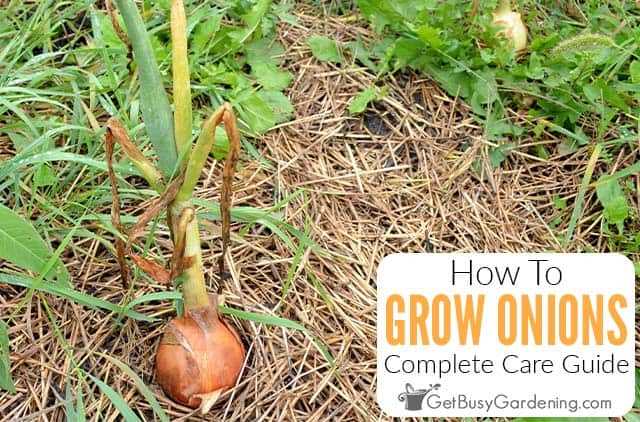
If the soil test results indicate a need for amendments, such as adjusting pH levels or adding nutrients, now is the time to make those adjustments. Add lime to raise the pH or sulfur to lower it, depending on the test results. Incorporate organic matter, such as compost or well-rotted manure, to improve the soil’s fertility and structure.
4. Loosen the soil
Using a garden fork or a tiller, loosen the soil to a depth of about 10-12 inches. This will help improve drainage and create a loose, friable soil that is ideal for onion roots to grow and develop.
5. Remove any clumps and debris
As you loosen the soil, be sure to remove any large clumps or debris that may hinder onion growth. Break up any compacted areas to create a uniform planting area.
6. Create rows or raised beds
Depending on your preferred planting method and space availability, create rows or raised beds in the prepared soil. Ensure that the rows or beds are spaced appropriately to allow for good air circulation and proper growth of the onion plants.
7. Mulch the soil
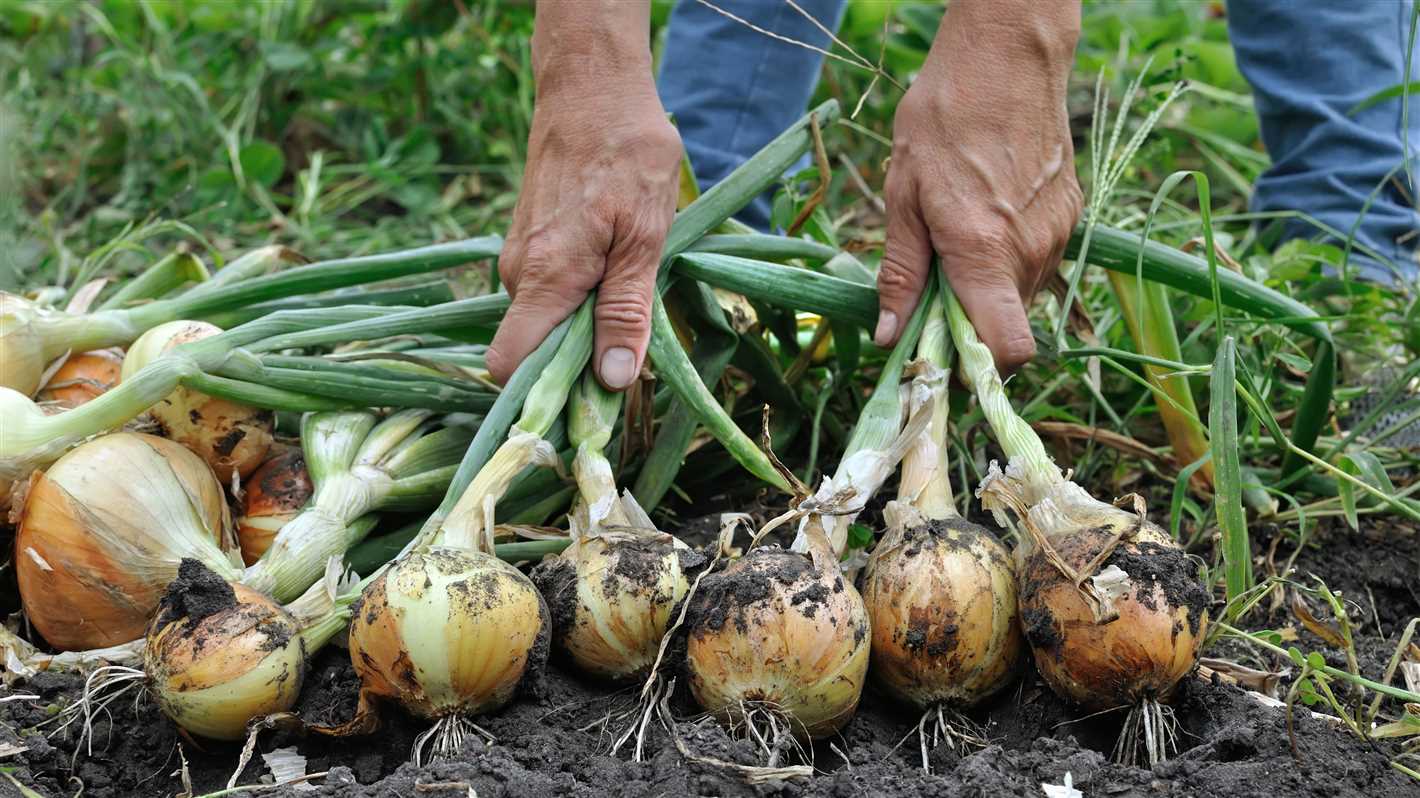
Apply a layer of organic mulch, such as straw or wood chips, to help suppress weed growth, conserve moisture, and regulate the soil temperature. This will also help protect the young onion plants as they emerge.
8. Water the soil
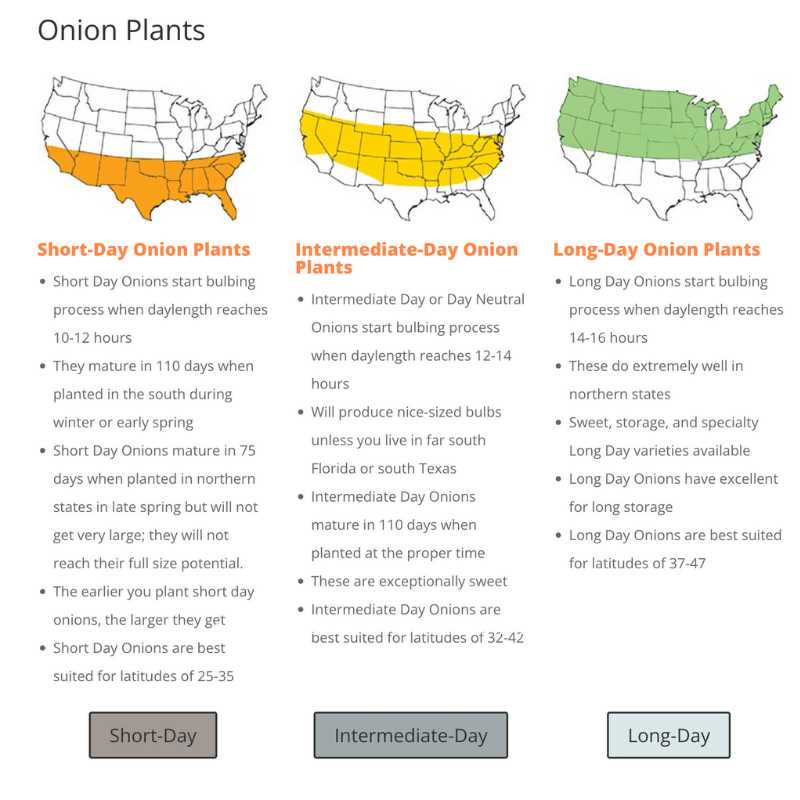
Before planting the onion sets or transplants, thoroughly water the soil to ensure it is evenly moist. This will provide a good environment for the onion roots to establish and promote healthy growth.
By following these steps to prepare the soil, you can create an optimal growing environment for your onions and increase your chances of a successful harvest. Remember to choose the right onion varieties for your climate and follow proper planting and care techniques for the best results.
Choosing the Right Onion Varieties for October Planting
When it comes to planting onions in October, selecting the right varieties is crucial for a successful harvest. Different onion varieties have different growth habits, storage qualities, and flavor profiles, so it’s essential to choose ones that are suited for your specific needs and growing conditions. Here are some factors to consider when selecting onion varieties for October planting:
Growing Season Length
Onions can be categorized into three main types based on their growing season length:
- Short-day onions: These varieties require 10-12 hours of daylight to bulb and are best suited for southern regions with mild winters.
- Intermediate-day onions: These varieties require 12-14 hours of daylight to bulb and are suitable for regions with moderate winters.
- Long-day onions: These varieties require 14-16 hours of daylight to bulb and are ideal for northern regions with long daylight hours during the growing season.
Storage Qualities
If you plan to store your onions for an extended period, it’s important to choose varieties with good storage qualities. Look for onion varieties that have a thick dry outer skin and firm flesh, as these are more likely to store well without spoiling.
Flavor Profiles
The flavor of onions can vary widely depending on the variety. Some onions are mild and sweet, while others have a strong and pungent taste. Consider your taste preferences and cooking styles when choosing onion varieties. Sweet onions are great for eating raw in salads or sandwiches, while pungent onions add depth of flavor to cooked dishes.
Popular Onion Varieties for October Planting
Here are some popular onion varieties that are well-suited for October planting:
| Variety | Growing Season | Storage Qualities | Flavor |
|---|---|---|---|
| Red Burgundy | Intermediate-day | Good | Mild and slightly sweet |
| Yellow Sweet Spanish | Long-day | Excellent | Sweet and mild |
| Walla Walla | Intermediate-day | Good | Mild and sweet |
| White Lisbon | Short-day | Fair | Mild and slightly pungent |
These varieties are just a few examples of the onion varieties available for October planting. Depending on your location and preferences, there are many other options to choose from.
Remember to consider the growing season length, storage qualities, and flavor profiles when selecting onion varieties for October planting. By choosing the right varieties, you can increase your chances of a successful onion harvest.
Best Practices for Planting Onions in October
1. Choose the Right Onion Varieties
When planting onions in October, it is important to choose the right onion varieties that are suitable for fall planting. Look for varieties that have a shorter maturity period and are recommended for late-season planting.
2. Prepare the Soil
Before planting onions, prepare the soil by removing any weeds, rocks, and debris. Onions prefer well-draining soil with a pH level of around 6.0 to 7.0. Amend the soil with compost or organic matter to improve its fertility.
3. Planting Depth and Spacing
Plant onions at a depth of 1 inch, with the neck of the onion bulb just above the soil surface. Space the onions about 4 to 6 inches apart, allowing enough room for the bulbs to develop. If planting in rows, space the rows about 12 to 18 inches apart.
4. Watering
Provide consistent moisture to the onion plants throughout their growing period. Onions require regular watering, especially during dry periods. Water deeply but avoid overwatering, as it can lead to rotting. Mulching around the plants can help retain moisture in the soil.
5. Fertilization
Onions are heavy feeders and require regular fertilization for optimal growth. Apply a balanced fertilizer, such as a 10-10-10 or 20-20-20 formula, at planting time and every four to six weeks during the growing season. Follow the package instructions for application rates.
6. Weed Control
Keep the onion beds weed-free to prevent competition for nutrients and water. Regularly inspect the plants for any signs of weeds and remove them promptly. Mulching can also help suppress weed growth around the onions.
7. Pest and Disease Management
Monitor the onion plants for common pests such as onion maggots, thrips, and onion fly. Use organic pest control methods or consult with a local extension office for appropriate insecticides. Additionally, be aware of common onion diseases like onion rot and downy mildew and take necessary preventative measures.
8. Harvesting and Storage
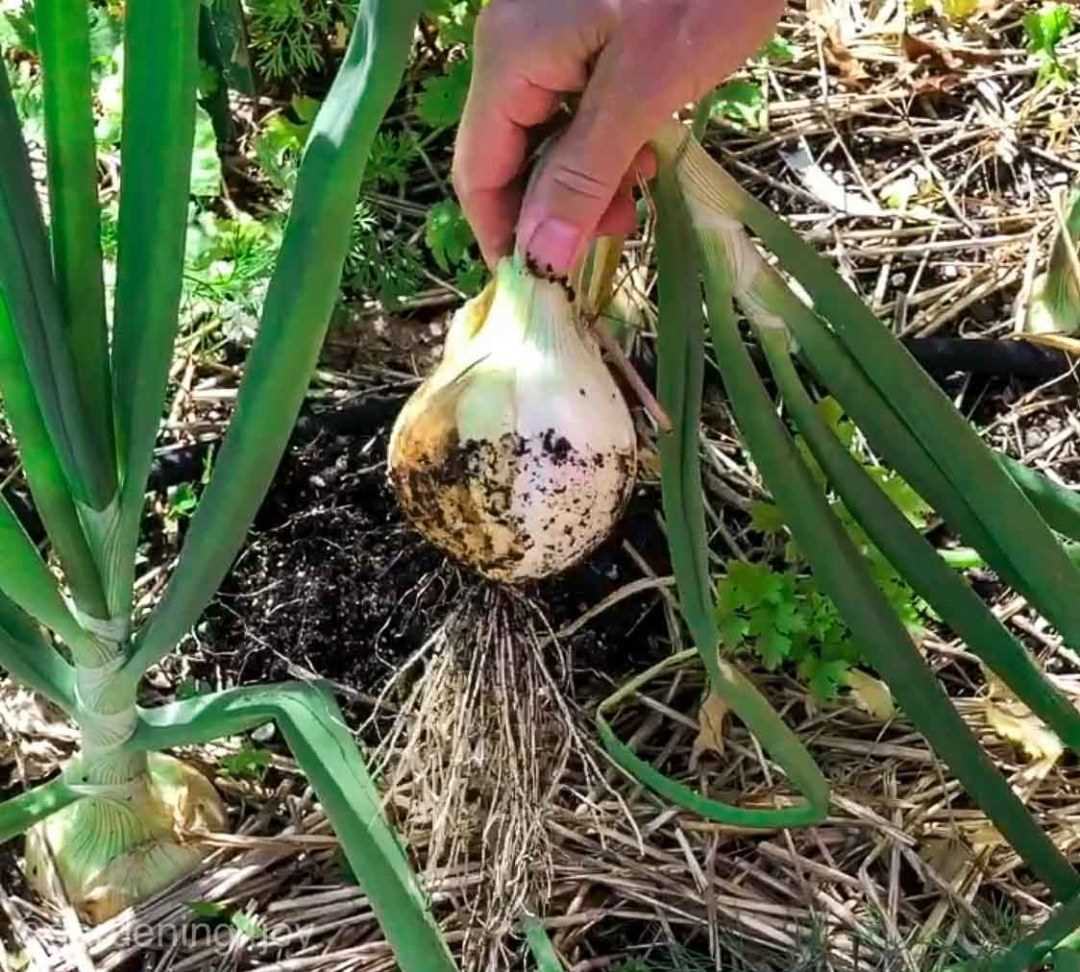
Harvest onions when the tops have turned yellow and started to fall over. Carefully lift the bulbs from the soil and allow them to dry in a well-ventilated area for a few weeks. Once dry, remove the dry outer layers and store the onions in a cool, dry place with good airflow.
Following these best practices for planting onions in October will help ensure a successful harvest and a bountiful supply of onions for the upcoming months.
Understanding the Ideal Growing Conditions for Onions
Onions are versatile and resilient plants that can be grown in a variety of conditions. However, to achieve optimal growth and a successful harvest, it is important to understand the ideal growing conditions for onions. Here are some key factors to consider:
1. Soil
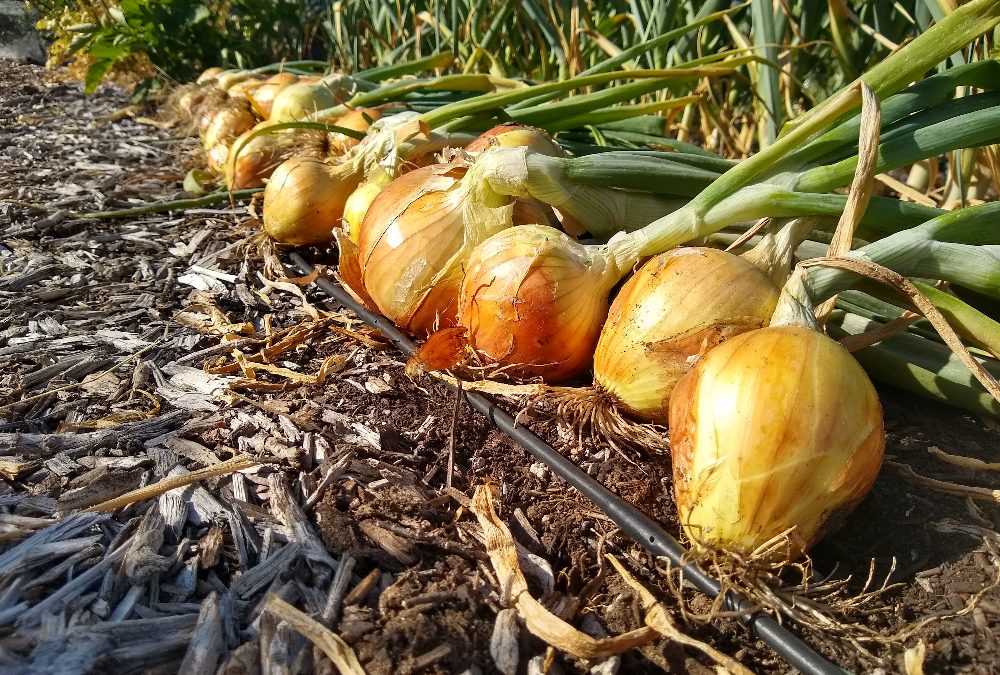
Onions thrive in well-drained soil that is rich in organic matter. A loamy soil with a pH level between 6.0 and 7.0 is ideal for onion cultivation. It is recommended to prepare the soil by adding compost or well-rotted manure before planting onions.
2. Sunlight
Onions require full sun exposure to grow and develop properly. They should receive at least 6-8 hours of direct sunlight each day. Ensure that the planting location is not shaded by trees or structures that may obstruct sunlight.
3. Temperature
Onions are cool-season crops and prefer moderate temperatures for growth. The optimal temperature range for onion cultivation is between 55°F (13°C) and 75°F (24°C). Avoid planting onions in areas with extreme temperature fluctuations or prolonged periods of frost.
4. Watering
Proper watering is crucial for onion plants. They require consistent moisture but should not be overwatered as it can lead to rot and disease. Onions should be watered deeply once a week, ensuring that the soil is evenly moist but not waterlogged.
5. Spacing
Onions need adequate spacing to allow proper root development and minimize competition for resources. Plant onion sets or seedlings 4-6 inches apart, with rows spaced approximately 12-18 inches apart.
6. Fertilization
Provide onions with a balanced fertilizer before planting to ensure they have access to essential nutrients. Additionally, a side dressing of nitrogen fertilizer can be applied during the growing season to promote healthy foliage development.
7. Weed Control
Weeds can compete with onions for nutrients, water, and sunlight. Regular weeding is essential to keep the onion bed free from weeds. Mulching the soil with a layer of organic material can also help suppress weed growth and retain moisture.
| Suitable Soil | Well-drained, loamy soil with pH 6.0-7.0 |
| Sunlight | Full sun (6-8 hours of direct sunlight per day) |
| Temperature | 55°F-75°F (13°C-24°C) |
| Watering | Consistent moisture without overwatering |
| Spacing | 4-6 inches between plants, 12-18 inches between rows |
| Fertilization | Balanced fertilizer before planting, nitrogen side dressing during growth |
| Weed Control | Regular weeding and mulching |
By ensuring that these ideal growing conditions are met, you can maximize the chances of success in planting onions and achieve a bountiful harvest.
How to Care for Onions during the October Planting
Planting onions in October requires some special care to ensure a successful harvest. Here are some tips to help you care for your onions during the October planting:
1. Prepare the Soil
Before planting, prepare the soil to ensure it is loose and well-drained. Onions prefer loose soil that allows for good root development. Remove any weeds and add organic matter like compost or well-rotted manure to improve soil fertility.
2. Planting Depth and Spacing
Plant the onion bulbs about 1 to 2 inches deep in the soil, with the pointed end facing up. The spacing between the bulbs should be around 4 to 6 inches, allowing enough room for the bulbs to grow and expand.
3. Watering
Onions need regular watering to ensure proper growth. Water deeply and evenly, making sure the soil is moist but not waterlogged. Avoid overwatering, as this can lead to rotting. During the cooler months of October, monitor the moisture levels closely, as onions require less water during this time.
4. Mulching
Apply a layer of mulch around the base of the onion plants to help conserve moisture, suppress weeds, and regulate soil temperature. Suitable mulching materials include straw, grass clippings, or compost. Mulching also helps prevent the bulbs from developing a green shoulder due to exposure to sunlight.
5. Fertilizing
Fertilize the onions with a balanced fertilizer high in nitrogen, phosphorus, and potassium. Apply the fertilizer according to the instructions on the packaging, being careful not to over-fertilize as this can burn the plants. Start fertilizing a few weeks after planting and repeat every 4 to 6 weeks throughout the growing season.
6. Pest and Disease Control
Keep an eye out for common pests and diseases that can affect onions, such as onion maggots, thrips, fungal diseases, and onion white rot. Implement preventative measures, such as crop rotation, proper sanitation practices, and using organic pest control methods if necessary.
7. Harvesting
Onions will be ready for harvest when the tops start to yellow and fall over. Once the tops have fallen, gently lift the onions from the soil and dry them in a well-ventilated area for several weeks. Once dry, trim the tops and roots before storing the onions in a cool, dry place.
By following these care tips, you can ensure a successful onion harvest after planting in October. Paying attention to soil preparation, watering, mulching, fertilizing, and pest control will help your onions thrive and produce healthy, flavorful bulbs.
Controlling Pests and Diseases in October-Planted Onions
When planting onions in October, it is important to be aware of potential pests and diseases that could affect your crop. Taking preventive measures and implementing proper control strategies can help ensure a successful harvest. Here are some common pests and diseases that can affect October-planted onions and how to control them:
Pests:
- Onion thrips: These tiny insects feed on onion foliage and can cause severe damage. To control onion thrips, regularly monitor your crop and use insecticidal soaps or oils when necessary. Removing weed hosts around the onion patch can also help reduce thrips populations.
- Onion maggots: These maggots feed on onion roots, leading to stunted growth and wilting. To prevent onion maggot infestations, practice crop rotation and remove any overwintering onion debris from the garden. Using row covers to protect young onion plants can also be effective.
- Cutworms: These caterpillars cut through onion stems at the soil surface, causing plants to wilt and die. To control cutworms, create physical barriers around young onion plants, such as collars made from cardboard or plastic. Applying organic insecticides like BT (Bacillus thuringiensis) can also help.
- Thrips: These insects feed on onion foliage and can transmit diseases. Regularly monitor your crop for thrips and use insecticidal soaps or oils if necessary. Removing weed hosts can also help reduce thrips populations.
Diseases:
- Fungal diseases (e.g., fusarium basal rot, downy mildew): These diseases can infect onions and cause wilting, yellowing, and rotting of the bulbs. To prevent fungal diseases, ensure proper drainage and avoid overwatering. Planting disease-resistant onion varieties and practicing crop rotation can also help reduce the risk of infection.
- Bacterial diseases (e.g., bacterial rots): Bacterial diseases can infect onions and cause slimy, foul-smelling rot. To prevent bacterial infections, practice good sanitation and avoid injuring onion bulbs during harvesting. Using clean, disease-free onion sets or transplants and avoiding overhead irrigation can also help reduce the risk of infection.
- Viral diseases (e.g., onion yellow dwarf virus, onion mosaic virus): These diseases can cause stunted growth, yellowing, and distorted leaves in onions. To prevent viral infections, use disease-free onion sets or transplants, control insect vectors that spread the viruses, and remove any infected plants from the garden.
By taking proactive measures to control pests and diseases, you can help ensure a healthy and productive onion crop when planting in October. Regular monitoring, practicing good sanitation, and implementing appropriate control strategies will greatly improve your chances of a successful harvest.
Harvesting and Storing Onions Planted in October
Once your onions have had enough time to grow and reach maturity, it’s time to harvest them. Harvesting onions planted in October typically occurs in the late spring or early summer, around 8 to 10 months after planting. The exact timing will depend on the variety of onions you have planted and the specific growing conditions in your area.
Signs of Harvest Readiness
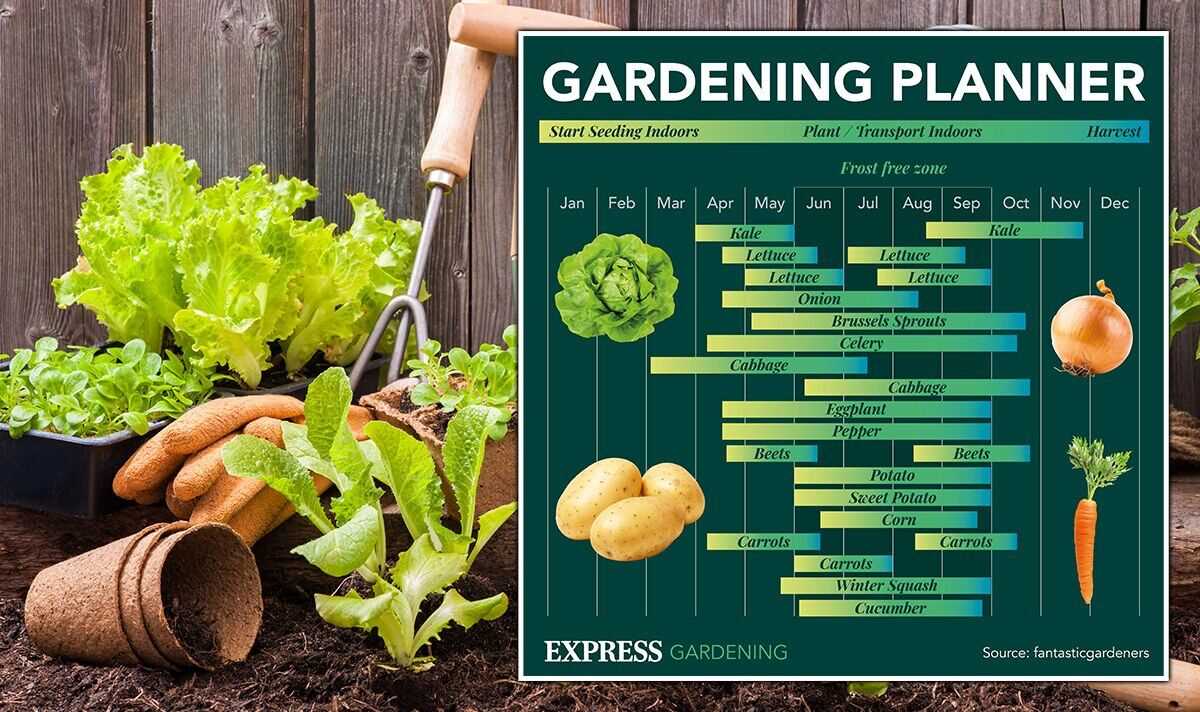
There are several signs that indicate when onions are ready for harvesting:
- The tops or leaves of the onion plant will start to turn yellow and fall over.
- The bulb of the onion will feel firm and have a papery outer skin.
- The foliage will begin to dry out and wither.
- If you gently dig around the bulb, you will see that it has reached its full size.
Once you observe these signs, it’s time to prepare for the harvest.
Harvesting Methods
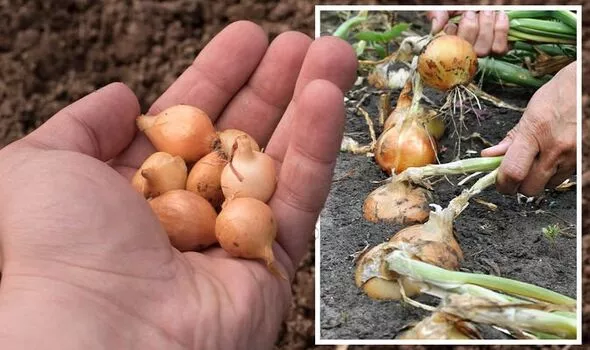
There are a few different methods you can use to harvest onions:
- Hand Harvesting: The most common method is to gently loosen the soil around the bulbs with a garden fork or trowel. Carefully lift the bulbs out of the ground, taking care not to damage them.
- Pulling: Another method is to simply grab the tops of the onions and pull them out of the ground. This method may work best for onions with looser soil or if the foliage has completely dried out.
Curing and Storing
After harvesting, it’s important to cure and store your onions properly to ensure their long-term storage and prevent spoilage:
- Curing: Lay the harvested onions in a single layer in a well-ventilated area with low humidity. Allow them to dry for about 2-3 weeks, or until the necks are fully dry and the outer skins have become papery.
- Trimming: Once the onions are fully cured, remove the foliage, leaving about one inch of the neck attached. Trim any roots, but do not remove the outer dry skin.
- Storage: Choose a cool, dry place to store your onions. Ideal storage conditions are around 32-40°F (0-4°C) with low humidity. You can store them in mesh bags, wooden crates, or even hang them in nylon stockings.
- Regular Inspection: Periodically check your stored onions for any signs of rot or spoilage. Remove any onions that show signs of damage to prevent it from spreading to the rest.
By following these steps, you can ensure that your onions harvested from plants planted in October will be well-preserved and ready to use throughout the year.
Tips for Success: Dos and Don’ts of October Onion Planting
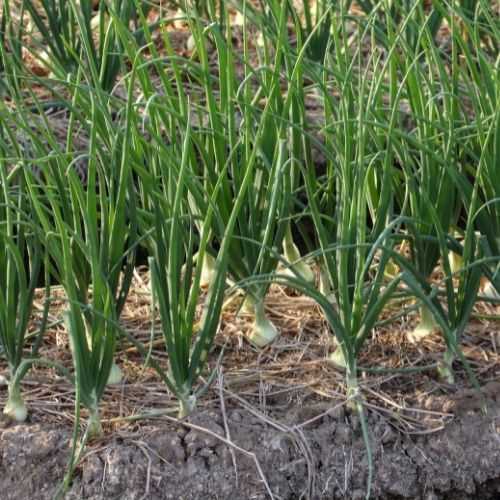
Do:
- Choose the right onion varieties for October planting. Look for varieties that are specifically recommended for late-season planting.
- Prepare the soil before planting. Onions prefer loose, well-draining soil. Amend the soil with compost or organic matter to improve drainage and fertility.
- Plant onion sets or transplants rather than seeds. October is a short growing season, so starting with pre-grown plants will give you a head start.
- Plant the onions in a sunny location. Onions need at least 6 hours of direct sunlight per day to thrive.
- Follow the spacing guidelines on the package or label. Proper spacing will ensure that the onions have enough room to grow without overcrowding each other.
- Water the onions regularly. Keep the soil consistently moist but not waterlogged. Aim to provide about 1 inch of water per week.
- Mulch around the onions to suppress weeds and conserve moisture. Use a layer of organic mulch, such as straw or chopped leaves.
- Monitor for pests and diseases. Common onion pests include onion maggots, thrips, and fungal diseases like onion rot. Take action immediately if you notice any signs of damage or disease.
- Harvest the onions when they are fully mature. Look for signs such as yellowing tops and papery skins. Gently lift the onions from the soil and allow them to dry in a well-ventilated area before storing.
Don’t:
- Plant onions too deep. Follow the planting depth guidelines on the package or label. Planting too deep can inhibit bulb formation.
- Overwater the onions. While onions need regular watering, excessive moisture can lead to rot and disease.
- Plant onions too late in the month. Aim to plant early in October to give the onions enough time to establish before the cold winter weather sets in.
- Plant onions in heavy or compacted soil. Onions prefer loose, well-draining soil, so avoid planting in areas with poor drainage.
- Plant onions in the same location year after year. Crop rotation is important to prevent the buildup of pests and diseases in the soil. Choose a different spot in the garden for your onions each year.
- Ignore the onions after planting. Regular maintenance, such as weeding and watering, is crucial for the success of your onion crop.
- Harvest the onions too early. Patience is key when it comes to onion harvesting. Give the bulbs enough time to fully mature for the best flavor and storage potential.
“Question-Answer”
Can I plant onions in October?
Yes, you can plant onions in October. It is actually the optimal timing for a successful harvest. Onions are cool-season crops and planting them in the fall allows them to establish roots before the winter.
What is the best time to plant onions?
The best time to plant onions is in October. Planting in the fall allows the onions to develop strong roots before winter sets in, leading to a more successful harvest the following summer.
Will onions grow if planted in October?
Yes, onions will grow if planted in October. In fact, planting onions in October is ideal because they are cool-season crops and the fall planting allows them to establish roots before winter, leading to a successful harvest the following year.
Is it too late to plant onions in October?
No, it is not too late to plant onions in October. In fact, October is the optimal time for planting onions as they are cool-season crops and planting them in the fall allows them to establish roots before winter arrives.
What are the benefits of planting onions in October?
Planting onions in October has several benefits. It allows the onions to develop strong roots before winter, which promotes a successful harvest the following summer. Additionally, fall planting gives onions a head start for growth in the spring when temperatures begin to rise.







